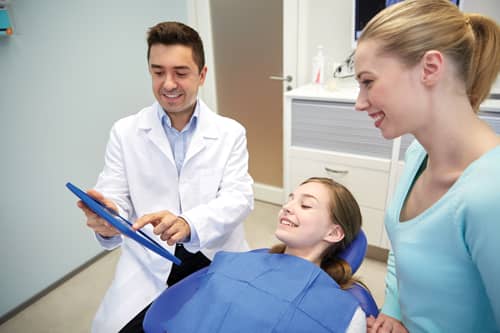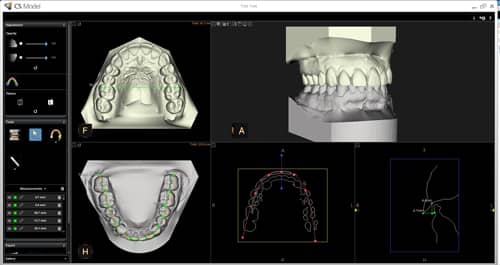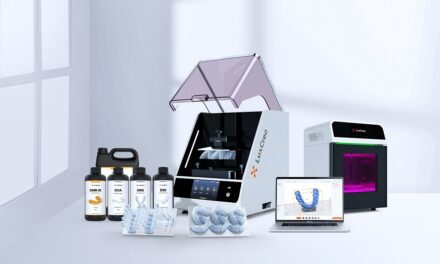What does a patient (or parent) look for in an orthodontist? I am the father of three children who have all had significant, two-phase orthodontic treatment (two are still in treatment). My father is a general dentist, my wife is a dental hygienist, and I have been involved in dental technology for over 20 years. This background gives me a unique interest and perspective of the patient experience—and the tools at your disposal to improve it.
I took my children to see an orthodontist at an early age because I wanted to ensure they would have the blessing of a great smile. Since that first visit, and during the countless subsequent visits, I have found myself wondering, “What does a parent look for in an orthodontist?” What did I use as criteria to select an orthodontist for my family’s $15,000+ in treatment?
As I contemplated these questions, here are some of the things orthodontic offices should consider to ensure they have a positive impact on their patients.
Make a Personal Connection
I want to know that a prospective orthodontist wants to treat my family. Seems obvious, because every orthodontist wants to treat as many people as possible, right? But does the parent KNOW that you want to treat their child and that it is not because of the money? As a parent, I want to hear, “Mr Hendrickson, I really hope that you will let me treat your child. I know that I will be able to correct their orthodontic issues in the best way clinically and visually possible and that it will improve their life as a result.”
What I think too many patients hear is more along the lines of “Mr Hendrickson, I am great and I assume you know that because you are here. If you will pay me in full today, I can give you a 5% discount and put braces on your child right now so that you don’t have time to talk with any other orthodontists.” Those are not the words anyone is saying, but without making a personal connection and commitment to better the child’s life, I think that is what many parents hear.
Show Me the Records
I want to see a complete and compelling set of initial records for my child. If I am looking at $5,000+ and a 12- to 24-month commitment for my child, I want to know everything has been thoroughly evaluated. I do not want to sit down and look at a generic model of some other patient with a “similar” starting point. Nor am I impressed with a quickly poured, roughly trimmed, unpolished stone model. Today is the computer age—I want to see a digital model of my child’s teeth on a computer screen. I want to understand how your proposed orthodontic treatment will make my child LOOK.
Many of today’s parents will judge you by how technologically advanced you appear. Most of your prospective patient visits will be conducted with parents between 30 and 45 years of age. Those of us in this age range grew up with computers. We were the first to use handheld PDAs, laptops, and the Internet. Older generations may have been turned off by “too much technology,” because they did not hold the same belief that high-tech meant better treatment. But today’s parents believe that advancements in technology have improved healthcare immensely. We want to connect with you personally, but we need to know that you are up to date with new treatments. Film x-rays and pencil marks on stone models send the message that you are not current with modern methods.
Tools like CS Model design software (Carestream Dental) make it very easy to show immediate, beautiful study models that will impress every patient/parent without any extra work for the office (Figure 1). This digital software automatically takes the operatory scan, mounts it on a polished ABO base, and is presentation ready in seconds. Software tools let you quickly take digital measurements, make annotations, and generate beautiful printouts with the push of a button for your patient to take home and that may find their way into the hands of other potential patients.
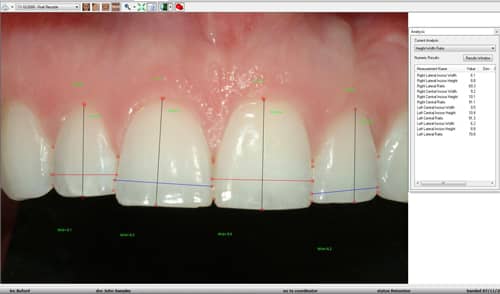
Figure 2: Sample micro-aesthetic calculation of Height-Width Ratios as evaluated in Sarver Module available in CS OrthoTrac Orthodontic Management Software.
Help Me Envision the Final Outcome
As stated at the beginning of the piece, I come from a dental background and I place a high value on proper tooth function. However, when it comes to orthodontics, even with my understanding of dentistry, I am not really concerned about ideal angulation of each tooth, intercuspal position, etc. I guess I just expect that any dental expert will factor that in as a given. When I take my child to an orthodontist, I want to know that they will have a beautiful smile that maximizes their personal and unique appearance.
Many orthodontists seem reluctant to talk about the overall visual outcome. I think this is why a growing number of patients are selecting “fast braces” treatments, because they generally do a good job marketing the “look” of the smile. The importance of this—as a parent—became crystal clear when I had the opportunity of working with David Sarver, DMD, MS. I attended some of Sarver’s courses on the “Soft Tissue Paradigm” and how the ideal smile is a factor of many facial characteristics. When Sarver demonstrated what can be communicated to the patients about how the ideal orthodontic treatment will build on their current positive aesthetics, I was left in awe and questioning if all of these factors had been considered for my child. Sarver’s presentation method goes well beyond a typical profile photograph. Since I assume most orthodontists do consider these factors, make sure to communicate them to the patient and parent. What a great way to separate yourself from any other orthodontist or dentist in the area! I cannot imagine any parent selecting an orthodontist who does not communicate a personalized soft tissue outcome over one who presents it like Sarver.
Imaging applications, like The Sarver Module (Carestream Dental) (Figures 2 and 3), can show your patient the many important soft tissue/facial characteristics that must be considered to maximize what the smile will look like in relation to the patient’s facial anatomy. Macro-, mini-, and micro-aesthetic guidelines can be automatically calculated for each patient as information is captured. The resulting ideal clinical goals and outcome predictions provide excellent documentation and case presentation tools that the patient and parent understand and appreciate. Talk about a way to separate your practice from a primary care dentist offering clear aligners or various “fast ortho” treatments!
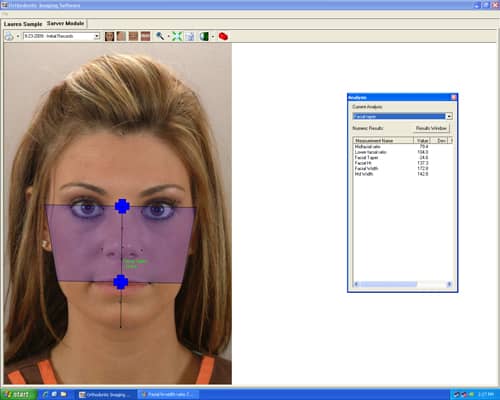
Figure 3: Sample macro-aesthetic calculation of Facial Taper using Sarver Module—available in CS OrthoTrac Orthodontic Management Software.
Visualize the Process for Me
Don’t assume patients/parents will accept treatment simply because you tell them their child has “a Class II malocclusion that could be corrected over 18 months of treatment,” etc etc. This may work on prospective patients who already trust you, but it is not nearly as likely to work on people you are just meeting for the first time and who are only partially educated on the many other orthodontic treatment options available.
I hear of an increasing number of orthodontists who are eliminating ceph tracings and impressions from their initial records for patient consultation. I think this is a mistake. I understand that full tracings are not useful in many cases that present. If tracings required significant doctor time while producing no clinical benefit, I could understand the argument that it may not be worth the time just to impress the patient—but today’s technology can automatically trace a cephalometric image for you without any staff or doctor time. If this can be done automatically, why not use it to impress your patients with a well-documented tracing analysis of the x-rays you have captured?
Replacing traditional impressions with digital is another way to “wow” prospective patients’ parents. Digital impression systems eliminate the mess and lab time required to take initial patient impressions. Plus, digital impressions immediately generate impressive-looking digital models to show your patient as soon as they leave the operatory and walk into your consultation room.
The Bottom Line
Today’s patients are bombarded with marketing for orthodontic treatment from local orthodontists, general dentists doing orthodontics, and now even mail-order aligners. Each generation is more visually wired than the last. If you show me this information in a quick, clean, efficient manner, you will have my trust to treat my children.
In short, I—as a parent—want to meet with one clinician who can quickly convince me they truly care about my child. I want to know that they have closely evaluated my child’s exact needs. I want to be able to trust they have considered the final outcome of how my child will LOOK (not just what angles their teeth will end up at, which I do not really understand). And I want to understand visually the process as much as possible.
These are not difficult or time-consuming tasks to accomplish. If you successfully accomplish them, your patient will understand how important your specialized skills are and will be willing to move forward with treatment at your office. And even more important, they will understand the value that a trained orthodontist has for their child versus a PCD and will be much more likely to share that information with others. OP


